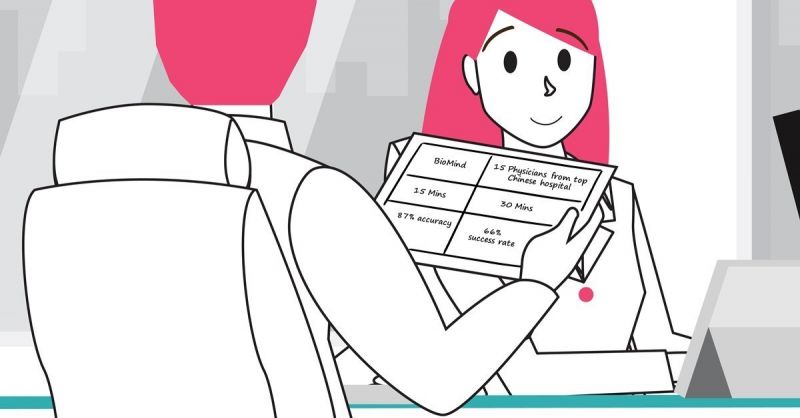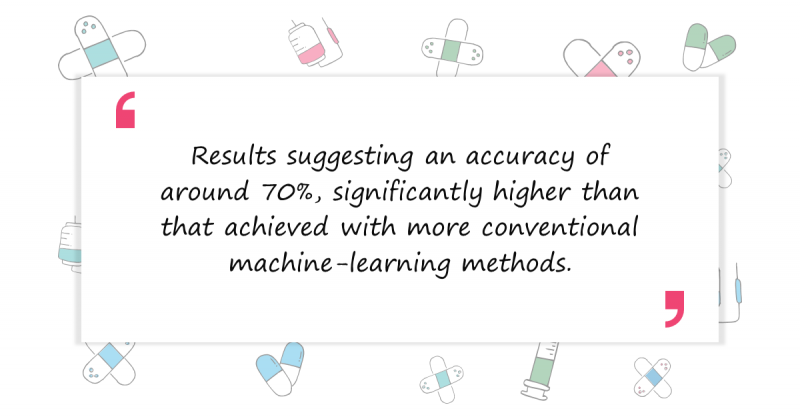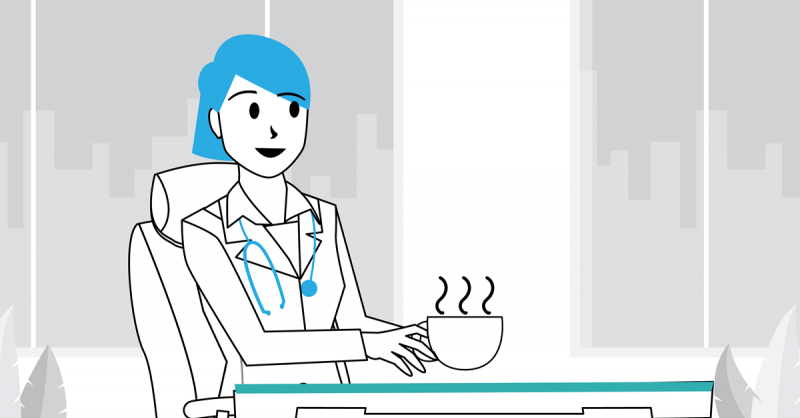I wonder if, a little like me, you find yourself inwardly sighing when someone mentions AI in a brand strategy meeting as if it is the answer to everything?
It’s clear that AI is an ever-evolving technology that has wonderful applications, able to transform products and services in so many ways across so many industries. However, AI inherently relies on large, high quality, complete collections of data, and in Pharma those can be harder to find than perhaps you might expect.
Images are rich sources of data
We’ve already seen innovation driving new models of care when large collections of images are available for analysis – for example in dermatology. Here the ease of taking a photograph and uploading an image has enabled AI led diagnostic algorithms to be developed.
Now, new imaging modalities and the application of AI are making a substantive difference to quickly diagnosing a range of neurological conditions.
We have an ever-increasing range of neuro-imaging technologies
There are a number of different approaches to neuro-imaging used routinely, from computed tomography (CT) to near-infrared spectroscopy (NIRS). The most widely used is, perhaps, functional magnetic resonance imaging (fMRI). This provides anatomical and functional information about changes in blood flow to particular areas of the brain, known to correlate closely with the activation of neurones. It is used to aid the diagnosis of neurodegenerative disorders, such as Alzheimer’s disease, as well as, chronic diseases such as glioblastoma.
But interpretation still remains a challenge
Interpreting these images, is not straightforward, for an individual physician, looking at images on their own.
Neurological departments in hospitals everywhere produce prodigious data sets, with relatively small variations in quality. Brought together, the opportunity to gain a deeper understanding of the differences between disease states is enormous, with clear implications for the diagnosis and tracking of neurological conditions.
Many companies are currently working on the application of artificial intelligence, whether it be machine-learning or the newer deep-learning approaches, to help.
How easily can AI be applied to healthcare?
Last summer, a Chinese company, BioMind, were confident enough in their AI system to run a competition pitting physicians against computer. The task was to diagnose brain tumours and predict hematoma expansions: BioMind diagnosed 225 potential cases in 15 minutes with 87% accuracy, compared to a team of 15 physicians from top Chinese hospitals who took 30 minutes to diagnose the same number of cases with only a 66% success rate.

And the advances in AI capability continue…
A team in Japan published details about MNet, an automatic diagnosis system for neurological diseases using magnetoencephalography (MEG). Using deep-learning, the system can be trained to, “extract and learn features of neuroimaging signals unique to various neurological diseases from a massive amount of time-series neuroimaging data”. Its performance in the diagnosis of various neurological conditions was successful.

Whilst these are exciting results, and we welcome tools which improve disease diagnosis, monitoring and tracking of treatment we need to be cognisant of some of the limitations.
Today deep-learning predictions can fail when they encounter unusual data points, such as unique medical cases, or when they learn peculiar patterns in specific datasets that do not generalise well to other medical cases. We expect, that the technological limitations will be addressed over time.
However, we will also need to learn how to manage some of the logistical challenges that hamper progress. For example, today there are only a very small number of professionals with both clinical and programming proficiency, and a distinct lack of international medical information sharing network platforms. Both of these issues have slowed the development of AI applications in healthcare, and undoubtedly ethical, legal and privacy concerns will need to be managed.
Nevertheless, the promise of computer-aided diagnosis of neurological disease is clearly there.
Imagine a future where the diagnosis of neurological conditions is quick and easy, reducing the burden on busy physicians, and enabling earlier intervention
We hope that one day the diagnosis of neurological conditions will no longer rely on a complex algorithm of combinations of symptoms, imaging results and patterns of behaviour.
Wouldn’t it be great to see diagnosis from definitive evidence, identified and quantified by the accurate, computer-aided interpretation of neuro-images.
Giving the potential to not only reduce the burden on busy physicians, reduce the cost of care and enable early treatment, but to go even further by offering expert advice and support to local centres.

All of these speak to the opportunities we often identify our brand strategy meetings, and so maybe, in the not too distant future, the answer for a novel added value service or solution to support your brand really will be AI!
If you’d like to read a little more, then take a look at this, a great article by Jeremy Hsu published earlier this year, that explains in easy terms the opportunities and limitations of AI applications more generally in healthcare.
If you’d like to hear a little more, then have a look at this video, a presentation given by Irina Rish from the IBM T.J. Watson Research Center towards the end of 2018.
Keep an eye out for this paper by Dr Max Wintermark and his team at Stanford, recently published in Frontiers in Neurology.
And finally, if you’d like to talk more about how we can help develop your brand strategy, please do get in touch. We’d love to hear from you - mary.deboos@oxfordsm.com
Meet us
If you’d like to meet our team, we’re pleased to be at eyeforpharma's Marketing and Customer Innovation Summit 2019 in London on 15th & 16th October, where we’ll be harnessing the power of customer experience in healthcare in our interactive workshop. We'd love you to join us.
Additional Sources
Visualising the brain: advances in neuroimaging analysis
https://www.bna.org.uk/mediacentre/news/visualising-the-brain-advances-in-neuroimaging-analysis
Deep Learning With EEG Spectrograms in Rapid Eye Movement Behavior Disorder
https://www.frontiersin.org/articles/10.3389/fneur.2019.00806/full
Automatic neurological disease diagnosis using deep learning
https://www.sciencedaily.com/releases/2019/05/190516103710.htm
Automatic diagnosis of neurological diseases using MEG signals with a deep neural network
https://www.nature.com/articles/s41598-019-41500-x
Artificial Intelligence defeats medics at neuroimaging
https://www.youtube.com/watch?v=CgX4VX0W5h4
Prepare For The Business Of Tomorrow Today
Share this
You May Also Like
These Related Stories

Combining customer experience and precision marketing

Pharma: your customer won’t wait for you to listen to them

.png?width=657&height=57&name=OXFORD%20LOGO%20(1).png)
No Comments Yet
Let us know what you think